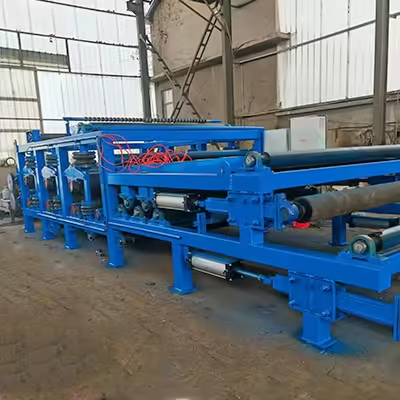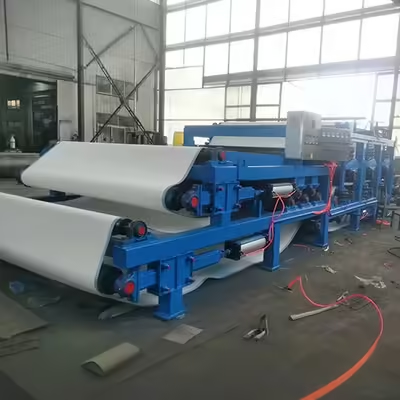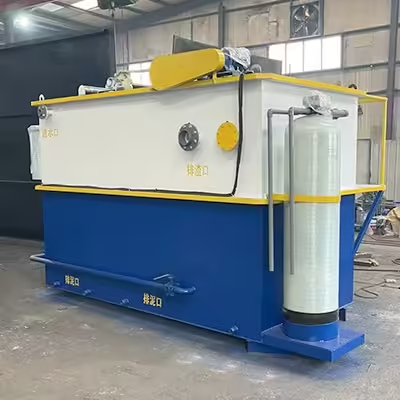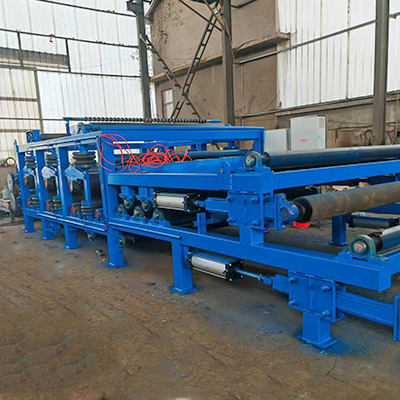Welcome to My Blog! 🌟
I’m so glad you’re here! Before we jump into the exciting content, I’d love for you to connect with me on my social media platforms. It’s where I share extra insights, interact with our amazing community, and post regular updates. Here’s how you can join the conversation:
📘 Facebook: Follow me on Facebook for more updates
Now, let’s dive into the journey ahead. I hope you find everything here both engaging and valuable. Together, let’s explore, learn, and grow! 🚀
Table of Contents
Introduction


Modern waste management is a cornerstone of healthy living environments and sustainable commercial operations. One of the most critical tools in efficient waste handling is garbage disposal equipment. Whether installed in a home kitchen or integrated into a large-scale commercial food service system, the right unit enhances sanitation, reduces odors, minimizes landfill contribution, and cuts down on manual labor.
With the global push toward eco-conscious practices, more homeowners and businesses are investing in innovative solutions that streamline food waste disposal. However, navigating the market can be daunting due to the sheer variety of models, configurations, and capabilities. Choosing the right garbage disposal equipment requires careful consideration of multiple factors—some obvious, others less so.
This article provides a detailed roadmap, offering expert advice, comparisons, and actionable tips to help you make the most informed decision possible. Whether you’re upgrading an old unit or investing in a new system, this guide will ensure you don’t waste your money—or your time.
Tip 1: Evaluate Your Waste Type and Volume
Before selecting any garbage disposal equipment, it’s vital to understand your specific waste stream. This includes both the type of waste you generate and the volume of that waste on a daily or weekly basis.
Key Waste Categories to Consider:
- Organic waste (fruit and vegetable scraps, cooked food remains)
- Fibrous waste (celery stalks, corn husks, artichokes)
- Protein-rich waste (bones, meat scraps)
- Oily or greasy waste (which may clog drains)
- Non-food waste (plastic, metal, glass — which should never go in)
Assessing Your Waste Volume:
Beyond waste type, the amount of material you need to process plays a major role in determining the appropriate size and horsepower of the equipment.
- A typical residential household may generate between 1 to 2 pounds of food waste daily. In these cases, lower horsepower units (such as 1/2 HP to 3/4 HP) can handle most needs efficiently.
- Small restaurants, coffee shops, or office pantries might deal with 20 to 50 pounds of food waste per day, particularly during peak service hours. Equipment for these environments should offer moderate to high horsepower (3/4 HP to 1 HP) and a durable grinding system.
- Large commercial kitchens, school cafeterias, or institutional facilities can easily generate over 100 pounds of food waste daily. In such high-demand situations, robust industrial-grade garbage disposal equipment with at least 1.5 HP to 2 HP or more is required for continuous, reliable operation.
Tip 2: Compare Power Ratings and Motor Types in Garbage Disposal Equipment

Power ratings are a critical specification in garbage disposal equipment. They directly affect grinding speed, efficiency, and the ability to handle tough food waste. The motor is the heart of the system, and its specifications will largely determine performance and longevity.
Common Horsepower Options:
- 1/3 HP: Budget-friendly and suitable for light residential use.
- 1/2 HP: A mid-range option for average households.
- 3/4 HP: Ideal for homes with higher usage or small commercial settings.
- 1 HP: Offers better grinding performance and noise reduction.
- 2 HP and above: Designed for heavy-duty industrial or institutional use.
Motor Types:
- Induction Motors: These are quieter, more durable, and suited for long-term residential use.
- Permanent Magnet Motors: Faster and lighter, offering high RPMs for quicker grinding but often noisier.
If you’re operating in a noise-sensitive area like a hospital, a quieter induction motor might be essential. On the other hand, fast-paced restaurants might prioritize grinding speed over sound levels.
Don’t forget to check for overload protection and auto-reverse grinding, which help prevent jams and protect the motor from burnout.
Tip 3: Consider Installation Requirements and Space Constraints
One of the most overlooked aspects when choosing garbage disposal equipment is how well it fits your space and plumbing setup. Even the most powerful, high-tech model is useless if it can’t be installed properly under your sink or within your cabinet layout.
Factors to Evaluate:
- Under-sink clearance: Depth, width, and position of plumbing lines
- Power source availability: Does the unit need a hardwired connection or plug?
- Drainpipe compatibility: Ensure fittings and diameters match
Another critical choice is between batch feed and continuous feed systems.
Comparison Table: Batch Feed vs. Continuous Feed Garbage Disposal Equipment
| Feature | Batch Feed | Continuous Feed |
|---|---|---|
| Safety | High – lid must be closed to operate | Moderate – operates with open drain |
| Installation Complexity | Slightly more complex | Easier to install |
| Ideal for | Homes with children or safety concerns | Busy kitchens with frequent waste |
| Water Usage | Lower – operates intermittently | Higher – runs longer during operation |
| Price Range | Generally more expensive | More affordable on average |
Choose batch feed if safety and water conservation are high priorities. Opt for continuous feed if you’re dealing with fast-paced environments where time efficiency is paramount.
Tip 4: Check for Durability, Material Quality, and Noise Reduction
A reliable piece of garbage disposal equipment should last for years without breaking down. The choice of materials used in the grinding chamber, as well as the overall construction of the unit, plays a major role in its durability.
Material Considerations:
- Stainless Steel Blades: Highly resistant to rust and corrosion; longer lifespan.
- Galvanized Steel or Plastic: More affordable but prone to wear over time.
- Anti-vibration Mounts: Reduce noise and help secure the unit firmly.
Noise Reduction Technologies:
- Sound baffles
- Insulated grinding chambers
- Quiet collars and gaskets
Noise levels vary greatly among models, and while it may seem trivial, loud units can disrupt homes, offices, or customer-facing businesses. Always check the decibel rating before buying if sound is a concern.
Investing a little more in quality construction will save you in repairs, replacements, and headaches in the long run.
Tip 5: Assess Maintenance Needs and Warranty Coverage

Every machine needs upkeep, and garbage disposal equipment is no exception. The difference lies in how easy the equipment is to maintain and how well it’s covered when something goes wrong.
Key Maintenance Features:
- Removable splash guards: Easier to clean and replace
- Self-cleaning systems: Use water and grinding rotation to minimize buildup
- Corrosion-proof interiors: Resist food acids and hard water
Warranty Considerations:
- Residential units: Often come with 1 to 10-year warranties
- Commercial/industrial units: May offer parts-only or comprehensive service plans
- In-home service: Some warranties include technician visits, others require shipping
Paying attention to warranty terms is essential. It’s also a good idea to check customer reviews for real-world reliability reports. A longer warranty typically signals better build quality and a more trustworthy brand.
Conclusion
When it comes to choosing garbage disposal equipment, the details matter. A model that works perfectly in a compact household kitchen may fail miserably in a high-traffic commercial setting. Likewise, overinvesting in an industrial-grade machine for simple residential use can lead to wasted money and unnecessary complexity.
The five tips outlined in this guide—knowing your waste type and volume, understanding motor specs, checking installation constraints, prioritizing durable materials, and reviewing maintenance needs—provide a comprehensive approach to evaluating your options.
Ultimately, the best garbage disposal equipment will align with your operational requirements, your budget, and your long-term needs. Make an informed decision, and you’ll enjoy cleaner spaces, fewer plumbing issues, and better overall waste management.
FAQ
What kind of garbage disposal equipment do I need for a small café?
A 3/4 HP or 1 HP unit is typically sufficient. Look for continuous feed models for quicker operation and stainless steel internals for durability.
Can I install garbage disposal equipment myself?
Yes, if you’re handy and the model comes with clear instructions. However, for larger units or complex plumbing systems, hiring a professional is safer and often required to maintain warranty coverage.
Are all food scraps safe for disposal?
No. Avoid fibrous vegetables, coffee grounds, eggshells, bones (especially large ones), and anything greasy or oily. These can clog drains or damage the unit.
How long does quality garbage disposal equipment last?
A high-quality unit with stainless steel components and good maintenance can last 10–15 years. Cheaper models may last only 5–7 years.
Does garbage disposal equipment affect the environment?
Yes, but mostly in a positive way. It reduces landfill waste and lowers methane gas production. Just ensure your municipal water treatment plant can handle food waste.






